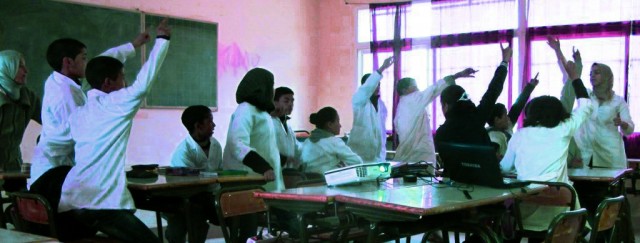Moroccan classrooms go interactive
By Creative Associates InternationalNovember 6, 2013

Saloua Ben Fethalla is a math teacher at Almajd School in Tahannaout, Morocco, a picturesque rural town at the foot of the Atlas Mountains. Her 13-year-old students are just beginning middle school.
Until recently, the class of over 40 students would sit in rows, straining to listen as Fethalla lectured. With classes this size, it was difficult for students to work in teams and for teachers to provide one-on-one coaching to students. Traditional rote learning, not comprehension, was the norm.
With USAID assistance, the situation has changed for the better. USAID’s Improving Training Quality to Advance National Education project in Morocco is reducing middle school dropout rates by improving teacher performance and creating a better environment for learning.
At the start of the last school year, in April 2012, Fethalla attended a series of USAID-organized trainings showing teachers how to create a more interactive classroom. Now, her students collaborate in groups, and she has more time to focus on their individual needs and unique learning styles. Fethalla now uses everyday examples from the children’s lives to give context and realism to her lessons.
During basic trigonometry lessons, students are organized in groups around the classroom. They eagerly raise their hands, hoping to be called upon to answer questions. Before this program began, quiet children could get lost in large classes. Now, their teacher draws them out. Fethalla recounts that she used to explain things through one-way communication. “Now the students learn on their own,” she says. “I’m just the coach.”
Like Fethalla, 70 percent of teachers who received the USAID training have improved their classroom techniques. Their students have scored up to seven points higher on tests, including Arabic, compared with students whose teachers did not receive the training.
This success story recently appeared on the USAID’s Transforming Lives website.
